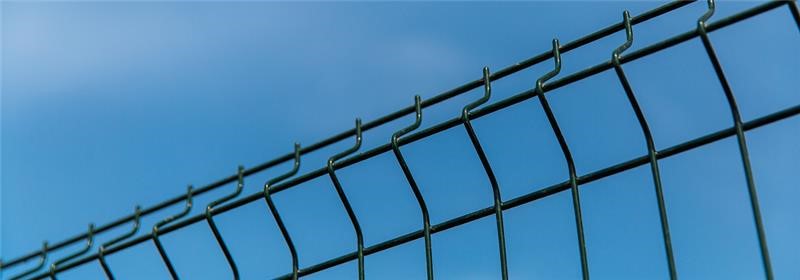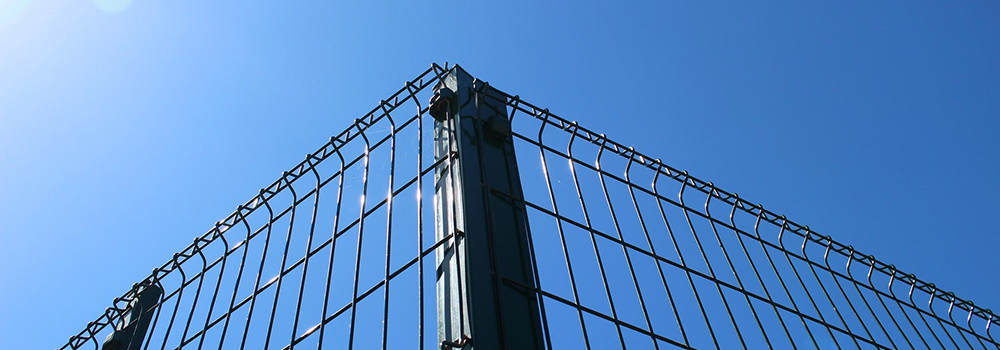Why Every Industrial Site Needs a Weldmesh Security Fence
Industrial areas have one shared need, strong and reliable boundary protection. From factories and power plants to storage yards and logistic hubs, every site requires fencing that keeps property safe without demanding frequent repairs. A weldmesh security fence fits that requirement better than most traditional options.
It combines strength, visibility, and long service life, making it one of the most practical choices for modern industrial sites.
What Is a Weldmesh Security Fence?
A weldmesh security fence is made of welded steel wires joined at each intersection. This creates a rigid panel that stays firm even under pressure. Unlike chain-link fencing, weldmesh does not loosen or sag over time. It is usually coated with zinc or powder paint to protect it from rust and harsh weather.
Industries use it because it offers:
- High strength and stability
- Good visibility for cameras and guards
- Low maintenance
- Easy installation with prefabricated panels
If you want to explore industrial-grade options, visit PeriFence’s Weldmesh Fencing Page to see specifications and models.

Why Industrial Sites Prefer Weldmesh Fencing
Weldmesh fencing is preferred in industrial settings due to its sturdy, weather-resistant design, which offers long-term protection. It goes up quickly, lets you see well, and doesn’t need much upkeep over time.
1. Strong Protection
2. Clear View for Surveillance
3. Long Lifespan
4. Faster Installation
5. Low Maintenance
Once installed, a weldmesh fence requires minimal upkeep occasional cleaning and inspection are enough to keep it in top condition. It remains functional and visually neat for years without frequent repairs.

Weldmesh vs. Other Industrial Fencing Types
When planning site security, companies often compare welded mesh with other materials.
| Fence Type | Durability | Visibility | Maintenance | Cost Range | Ideal Use |
| Chain-link | Moderate | Good | Medium | Low | Temporary or low-security zones |
| Barbed wire | Low | Poor | High | Low | Rural areas or secondary barriers |
| Palisade | Very high | Moderate | Low | High | High-risk industrial sites |
| Weldmesh | High | Excellent | Low | Medium | Industrial & commercial perimeters |
The Difference Between Weld Mesh and Wire Mesh
Many people think they are the same, but they are built differently.
- Weld mesh: Steel wires are welded together at every junction, forming a fixed grid. It does not move or loosen easily.
- Wire mesh (woven mesh): Wires are woven like fabric. It is flexible and cheaper but less strong.
Because of its rigidity and long life, weld mesh is better for industrial security fencing, while wire mesh is more suitable for temporary barriers or lightweight partitions.
Understanding Weldmesh Fencing Prices
Pricing for a weldmesh security fence is determined by a number of criteria, including panel height, wire thickness, coating type, and site layout. Thicker wires and powder-coated finishes typically cost more, but they last longer and are more durable.
For most industrial sites, standard weldmesh panels are the most economical option, while heavy-duty and anti-climb models are used in high-security areas such as factories, power stations, and warehouses.
Since fencing costs also depend on ground conditions and installation requirements, it is best to request a custom quote from PeriFence. Their team evaluates your site, recommends the right specification, and provides an accurate estimate based on current weldmesh fencing prices and project scale.
For an accurate estimate, request a site-based quote from PeriFence.
How to Calculate Fencing Cost
Here is a simple way to estimate fencing costs:
- Measure your site perimeter in meters.
- Multiply by the cost per meter of your chosen panel.
- Add cost for posts, fittings, and gates.
- Include labor (around 25–40% of material cost).
- Add 5–10% extra for uneven ground or corners.
You can also use online fence cost calculators to compare total expenses for different materials.
Best Time to Install a Weldmesh Fence
Fencing can be installed at any time of the year, but a few conditions help improve results:
- Dry weather ensures better concrete setting for posts.
- Cool seasons like late winter or early spring reduce delays.
- Avoid monsoon months when the ground becomes soft or muddy.
Installing during the off-season can also lower labor costs since demand is less.
Additional Security Features
A weldmesh security fence can be upgraded with several add-ons:
- Anti-climb designs with tighter mesh spacing
- Barbed or concertina wires on top for higher security zones
- Electric fence integration, where legally permitted
- CCTV and lighting integration for 24-hour monitoring
- Color coatings to match corporate or industrial branding
Such customizations strengthen protection while keeping the boundary professional-looking.
Maintenance and Longevity
Maintenance for a weldmesh fence is simple:
- Inspect panels and posts twice a year.
- Clean dust or grease using a mild detergent.
- Touch up scratches to prevent rust.
With this care, galvanized fences can last up to 20–25 years. Powder-coated variants often retain color and gloss longer than plain painted fences.
Key Advantages of Using a Weldmesh Security Fence
| Feature | Description | Advantage for Industrial Sites |
| Strength and Stability | Welded intersections keep the fence rigid and firm under pressure or impact. | Prevents bending, sagging, and unauthorized entry. |
| High Security | Difficult to cut, climb, or damage due to strong welded joints and narrow mesh spacing. | Protects assets and reduces security risks. |
| Visibility | Mesh design provides clear sightlines for guards and CCTV cameras. | Enhances monitoring without blocking visibility. |
| Low Maintenance | Galvanized or powder-coated finish prevents rust and corrosion. | Reduces repair costs and downtime. |
| Longevity | Durable materials withstand weather and wear for 15–25 years. | Ensures long-term protection with minimal replacement. |
| Ease of Installation | Panels are pre-fabricated and fit standard posts. | Quicker setup, less labor time, and lower installation costs. |
| Custom Options | Can integrate electric wires, barbed tops, or custom colors. | Flexible design that suits different industrial needs. |
Ready to upgrade your site’s boundary? Get a free site quote from PeriFence.

Conclusion
A weldmesh security fence is not only about boundary control; it is about peace of mind. It offers industrial sites a combination of durability, visibility, and low maintenance that other materials rarely match. From small warehouses to large plants, this fencing system ensures your property remains secure year after year.
If you are planning an installation or comparing fencing solutions, explore our service page to understand product types and get tailored recommendations.
Protect your facility with trusted solutions. Contact PeriFence today for expert advice and a custom quote.
FAQs
What is the best type of security fence?
Weldmesh or palisade fencing is the best choice for industrial sites because it is strong, easy to see, and easy to take care of.
What is the cheapest security fence?
Chain-link fences are cheaper initially but need frequent tensioning and repair. Weldmesh gives better long-term value.
How to calculate fencing cost?
Multiply the total perimeter length by the unit price per meter, then add posts, fittings, gates, and labor costs.
What is the best time of year to install a fence?
The dry, cooler months before or after the monsoon are ideal for stable installation and faster completion.
